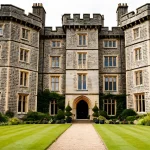Defining the Allure of the UK’s Historical Sites
The UK historical sites hold a unique place in preserving the nation’s rich cultural heritage. These landmarks are more than mere structures; they embody centuries of British history, offering visitors a tangible connection to past events, traditions, and people. Understanding why visit UK historical sites often comes down to this enduring cultural significance that not only educates but also inspires a deep appreciation for heritage.
Many historic landmarks showcase diverse architectural styles, from medieval castles to Georgian townhouses, each narrating different chapters of the UK’s story. Their preservation highlights the importance of maintaining these treasures for future generations, ensuring that stories embedded in stone and mortar continue to resonate.
In parallel : How Can You Experience the UK’s Cultural Heritage Through Museums?
Moreover, these sites play a crucial role in shaping the UK’s national identity. British history is inseparable from its monuments and heritage, reflecting social evolution, political milestones, and community resilience. Exploring these places unfolds the fabric of the nation’s past, making a visit a rich, immersive experience for anyone interested in history and culture.
Iconic Sites and Their Distinctive Features
Discovering must-visit UK landmarks offers a journey through history and culture. The Tower of London holds a unique place as a fortress, royal palace, and prison. Its medieval architecture and the Crown Jewels draw countless visitors. Similarly, Edinburgh Castle dominates the skyline with its dramatic position and storied past, reflecting Scotland’s heritage. Stonehenge, famous for its mysterious standing stones, captivates with its prehistoric significance and astronomical alignments.
Also to see : What Unknown Adventures Await in the Lesser-Known Corners of the UK?
Beyond these, less-explored gems like York Minster showcase magnificent Gothic architecture and centuries of religious history. The Roman baths in Bath reveal intricate engineering, while Hadrian’s Wall stretches as a testament to Roman military ambition.
Several of these are proudly designated UNESCO World Heritage sites. This status highlights their global cultural and historic importance and ensures preservation for future generations. Understanding these designations helps appreciate why such iconic British destinations remain cherished worldwide. These landmarks are not only photographic highlights but portals into the UK’s vibrant past, making them essential stops on any tour.
Captivating Stories and Historical Events
Nestled within many historical events in UK heritage sites are tales that have shaped the nation’s identity. For example, sites like Windsor Castle have witnessed pivotal moments such as royal coronations and dramatic sieges, reflecting centuries of historical significance. These locations are more than stone walls—they are storytellers of the past.
Intriguingly, British sites are steeped in legends and myths that add layers of mystery. The Arthurian legends are woven through places like Tintagel Castle, where the myth of King Arthur’s birth sparks imaginations. Ghost tales abound as well, with reputed hauntings offering a chilling connection to history’s shadows.
Artifacts and relics discovered onsite offer tangible links to bygone eras. From medieval weaponry to ancient manuscripts, these treasures illuminate the lives and events tethered to these locations. Their preservation ensures that visitors not only see history but feel its enduring presence. The interplay of factual accounts and mythological storytelling creates a captivating lens through which to explore the UK’s rich heritage.
Visitor Experience and Practical Insights
When visiting UK historical sites, preparation enhances your experience. Booking tickets in advance often secures entry and may include guided tours, which provide invaluable context and deeper understanding. The best times to visit are usually weekdays or early mornings, avoiding peak crowds and allowing you to enjoy exhibits with greater ease.
Many sites now offer interactive exhibits and experiences designed to engage visitors of all ages. Touchscreen displays, augmented reality, and live demonstrations transform static historical facts into memorable, immersive moments. These enrich your understanding far beyond traditional displays.
Accessibility is a growing priority at UK historical sites. Facilities such as ramps, lifts, audio guides, and clear signage accommodate a range of needs, ensuring inclusive access. Check individual site websites for specific information on accessibility before planning your visit.
Local recommendations, from nearby eateries to scenic walking routes, add charm and convenience to your trip. Combining historical exploration with local culture creates a balanced, enjoyable visit. Whether you rely on guided tours or explore independently, these travel tips UK help maximize your time and appreciation of England’s rich heritage.
Unique Factors That Set UK Historical Sites Apart
UK historical sites stand out due to their seamless integration of heritage preservation and modern visitor experiences. Unlike many global counterparts, British sites carefully balance maintaining authentic structures with offering interactive exhibits, making history both tangible and engaging for visitors. This blend enhances the cultural value, allowing guests to connect deeply with the past while enjoying contemporary amenities.
Community involvement plays a crucial role in what makes UK destinations unique. Local populations often participate in storytelling and site interpretation, adding layers of personal narratives that enrich the historical context. This approach provides a dynamic perspective, transforming visits into immersive journeys through time rather than passive tours.
Comparing UK historical sites to those worldwide reveals their distinctive commitment to fostering personal connection and education. The emphasis on preserving original elements alongside embracing innovative methods sets these British sites apart. It’s this combination of authenticity, community engagement, and innovative presentation that creates truly unique UK destinations prized by history enthusiasts globally.











